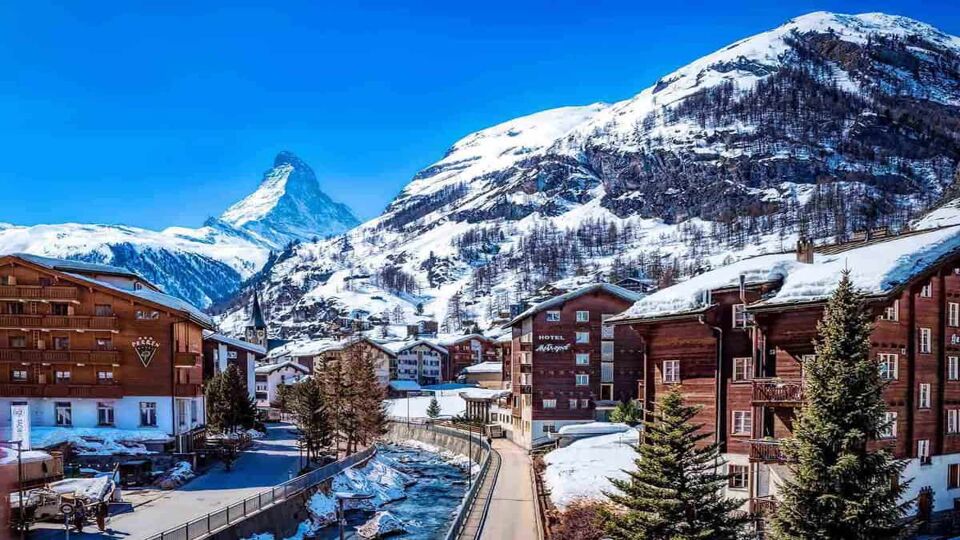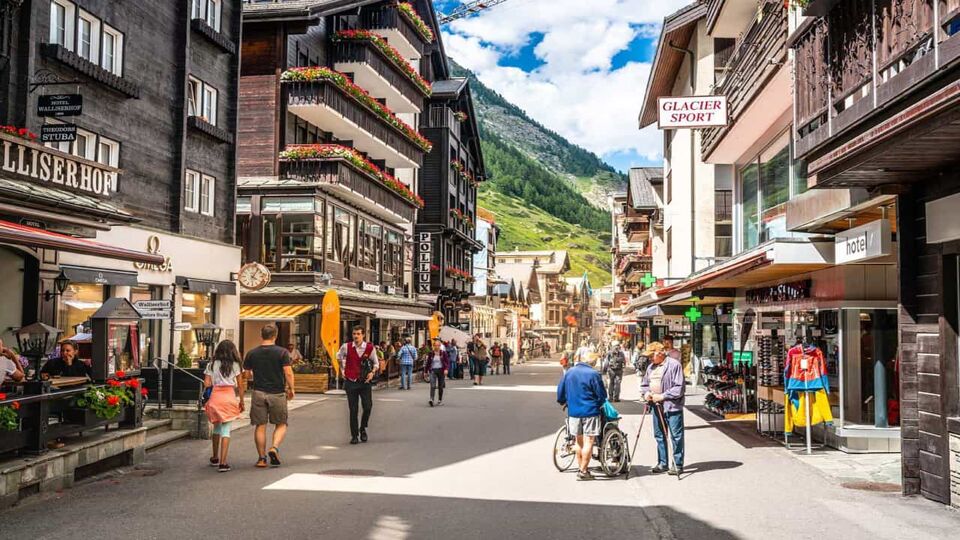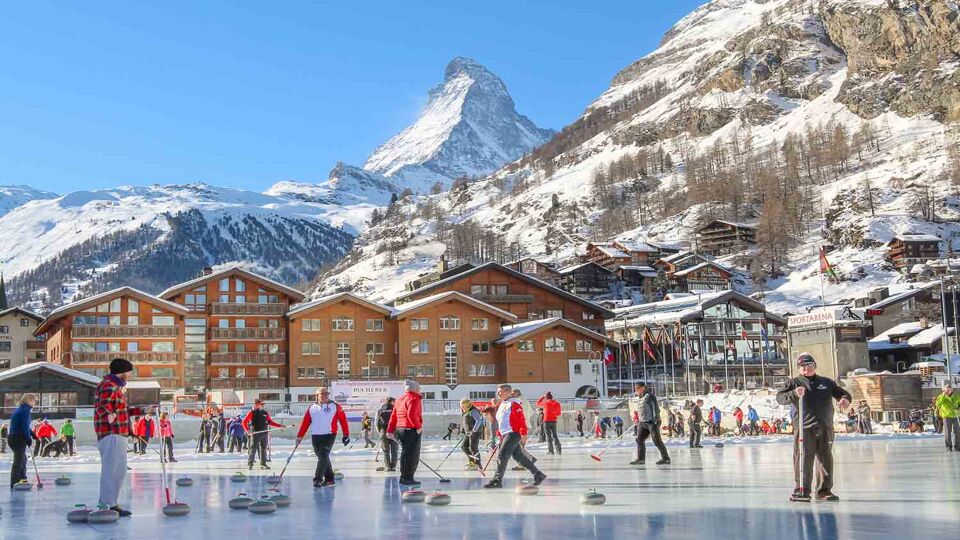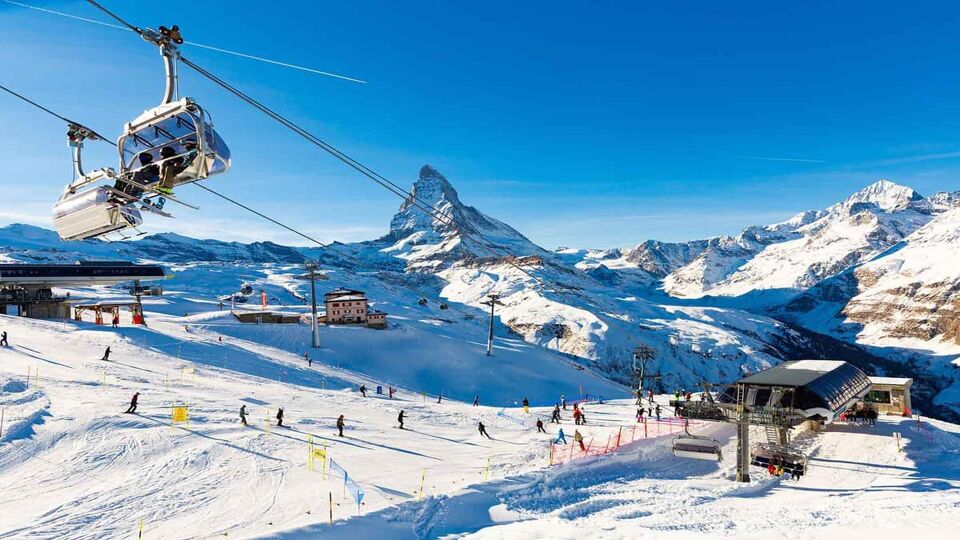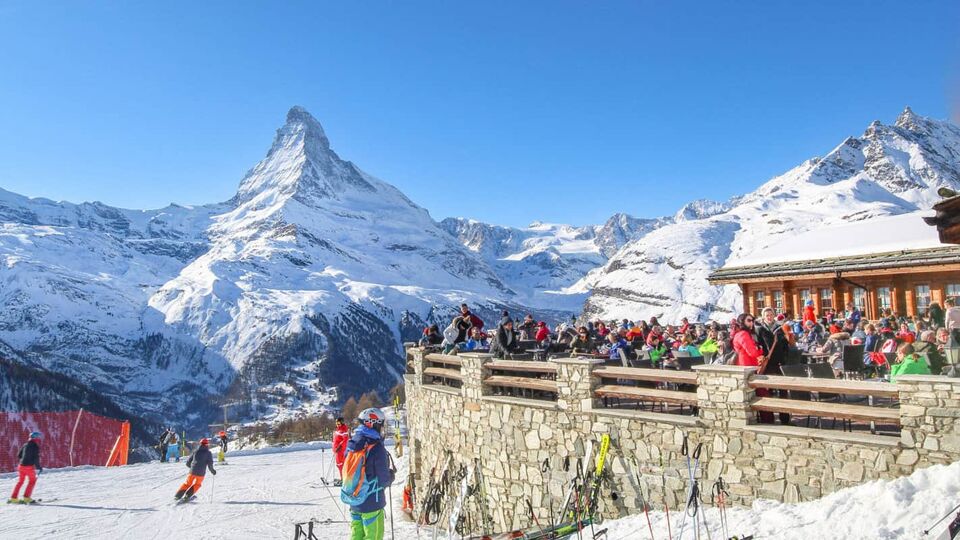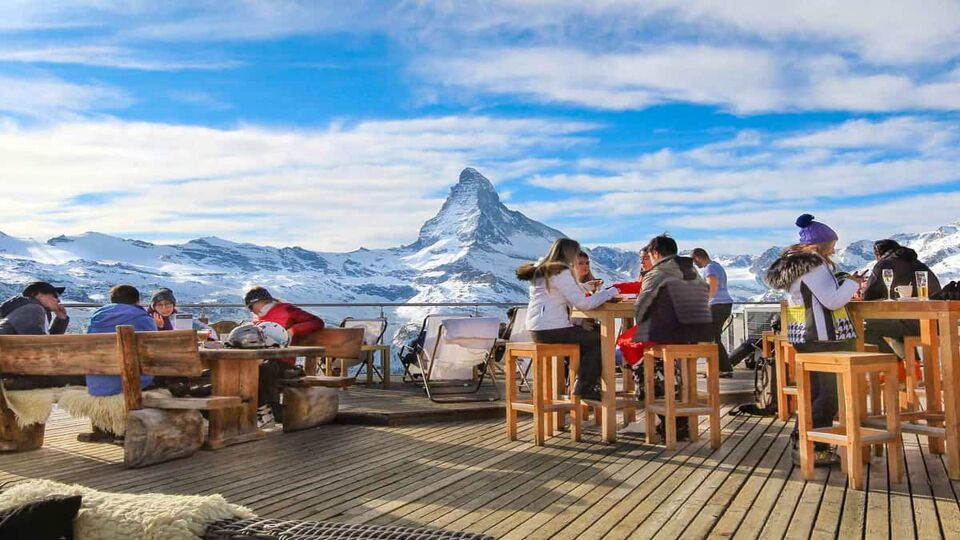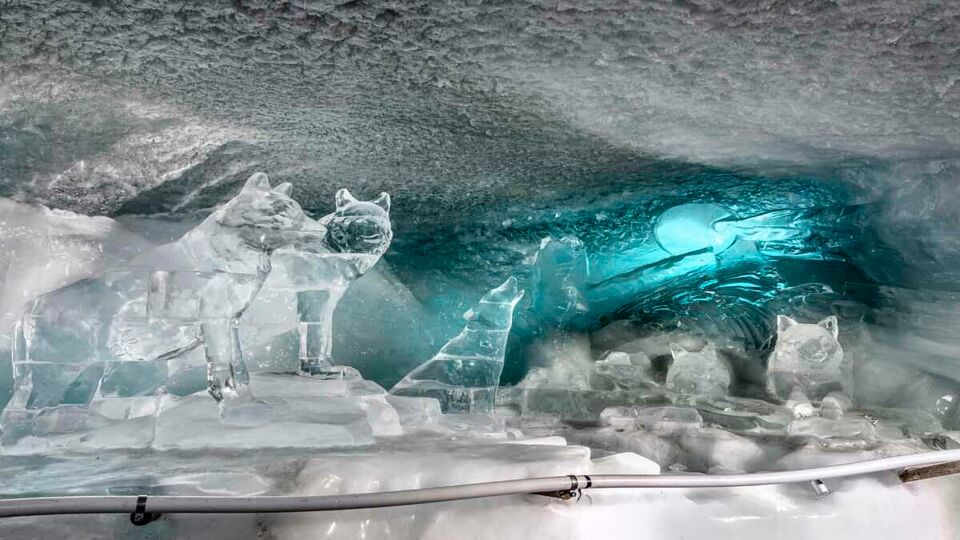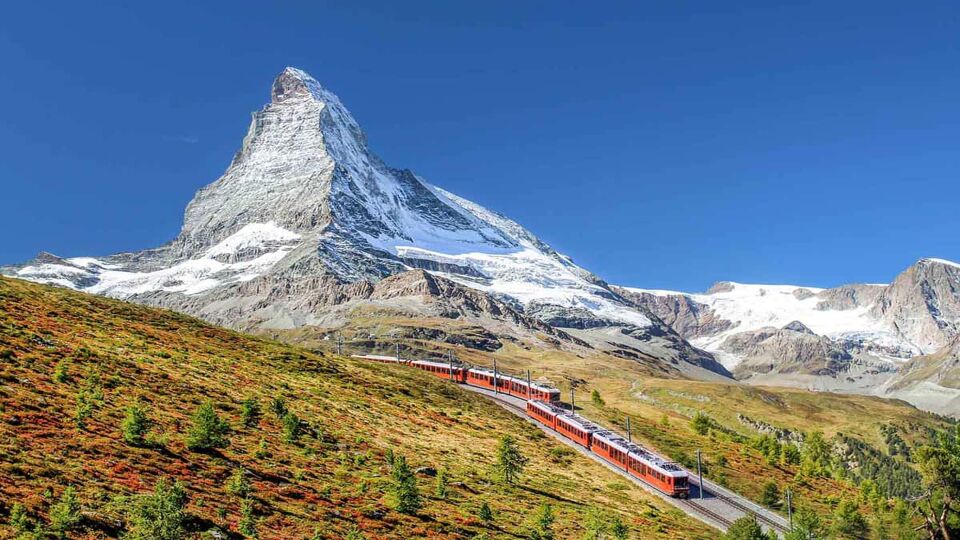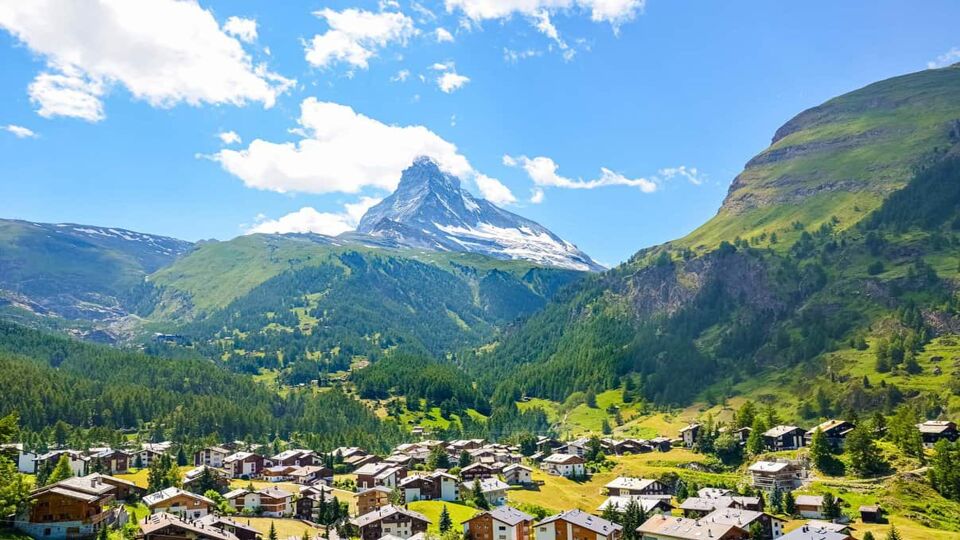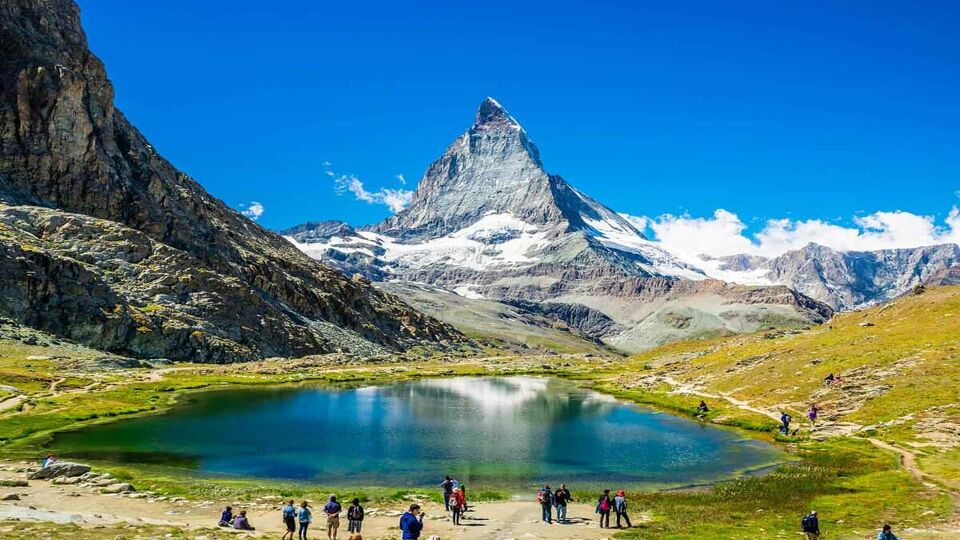
Bucket list destination:
Zermatt
Zermatt, Valais, Switzerland
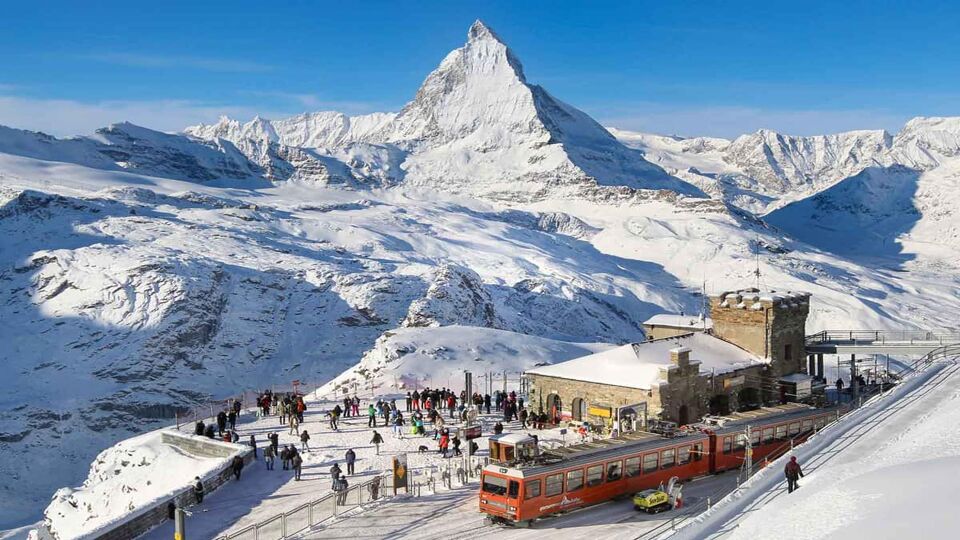
Credit Shutterstock.com/Bernsten
A blend of the rustic and the chic, watched over by the mighty Matterhorn, Zermatt is a formidable combination of all that could be desired in a ski resort.
Its extensive, varied and lofty slopes provide wonderful skiing for intermediate and advanced skiers, and boarders. The altitude, and glacial area, gives good snow cover over a long season with a sophisticated lift system that is constantly upgraded. The slopes boast the world’s best mountain restaurants. The spa scene gets more impressive each season, and the range of activities, from ice skating to cinema, is among the Alps’ widest.
Cosmopolitan, traffic-free Zermatt is as busy in summer as winter. It has matchless charm and an extensive choice of après-ski bars, high-end restaurants and designer shops.
Exceptional runs
Zermatt is home to some of the world’s best ice-climbers and they guide the adventurous (beginners included) on exceptional routes over frozen waterfalls. Paragliding flights, from a range of take-off points, last up to 30 minutes. There are helicopter flights over the Matterhorn too.
On the ice rink you can try curling as well as skating, and over seventy kilometres of paths are cleared through silent forests for winter walking and snowshoeing, which is increasingly popular.
Apres ski
Starting with piste-side huts to punctuate the home runs, some of them with live bands, Zermatt has some of Switzerland’s best après-ski. Back in the village the range embraces everything from sophisticated (and expensive) cocktail bars, usually hotel-based, to British-style pubs and cheaper bars that are the haunts of locals and season-long workers.
Other activities on offer
Zermatt is home to some of the world’s best ice-climbers and they guide the adventurous (beginners included) on exceptional routes over frozen waterfalls. Paragliding flights, from a range of take-off points, last up to 30 minutes. There are helicopter flights over the Matterhorn too.
On the ice rink you can try curling as well as skating, and over seventy kilometres of paths are cleared through silent forests for winter walking and snowshoeing, which is increasingly popular.
Zermatt remains popular during the summer months, with over 20km of skiable piste on Theodor Glacier. Mountaineering, hiking and climbing are popular too, with plenty of experienced guides on hand, while more than 100km of cycling trails draw mountain bikers to the picturesque summer slopes and forests.
Orientation
Switzerland’s southernmost resort, Zermatt lies at 1,618m in the Mattertal, in the canton of Valais, surrounded by some of the country’s highest peaks. It links with slopes in the Italian resort of Cervinia.
Everyone arrives by the rack railway – cars are banned (there are electric taxis instead). A mix of ancient farms, grand hotels and modern steel and glass buildings, the village straggles along the river, with ski lifts at either end of town.
Travel advice
When to go
Zermatt is high and the Theodul Glacier guarantees snow, usually with skiing available throughout the year. However, the terrain is rocky, which means substantial snowfall is needed to make the non-glacial slopes skiable and the area is quite dry.
But the altitude, with three of the four sectors having a top station above 3,000m, still guarantees a long season, from the end of November until the end of April. Extensive snowmaking, down to village level, and lots of north-facing slopes, helps matters. December and April are quiet months and with good snow can be great times to visit.
Getting there and away
Geneva or Zurich are the closest main airports, with some charters using Sion. The best transfer option is the train. Zurich is slightly closer than Geneva (journey time of just over 3 hours with one change).
Zermatt is car-free and cars must be parked at Täsch, one train stop away. From the airports, take the mainline to Visp and change for the fabulously scenic rack railway to Zermatt.
Getting around
Car-free Zermatt is compact enough to get about on foot. With ski boots and skis, however, most people use the electric taxis or the ski-bus to reach the lifts – Sunnega underground funicular and the Gornergrat Railway at the north end, the Matterhorn Express gondola at the south. An impressive system of fast chairs, gondolas and rack railway links the ski sectors, with only occasional queues.

